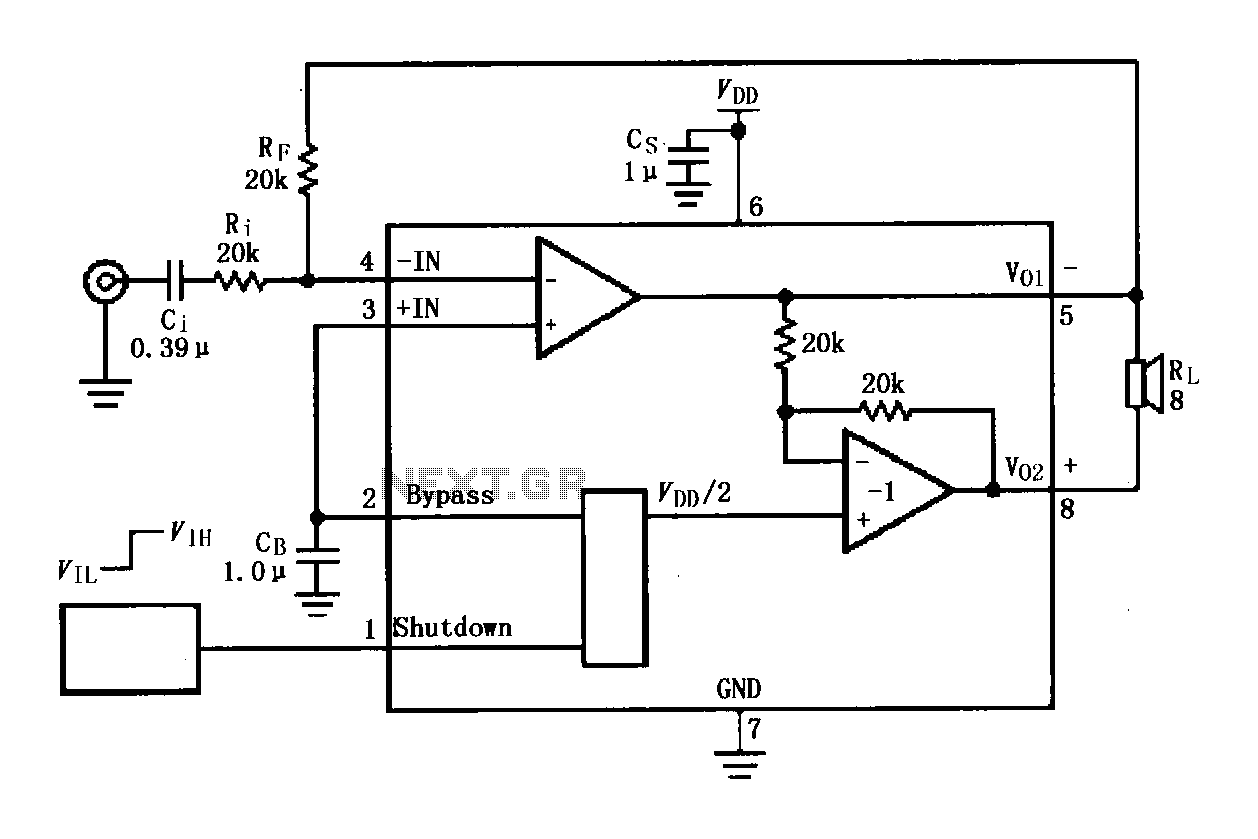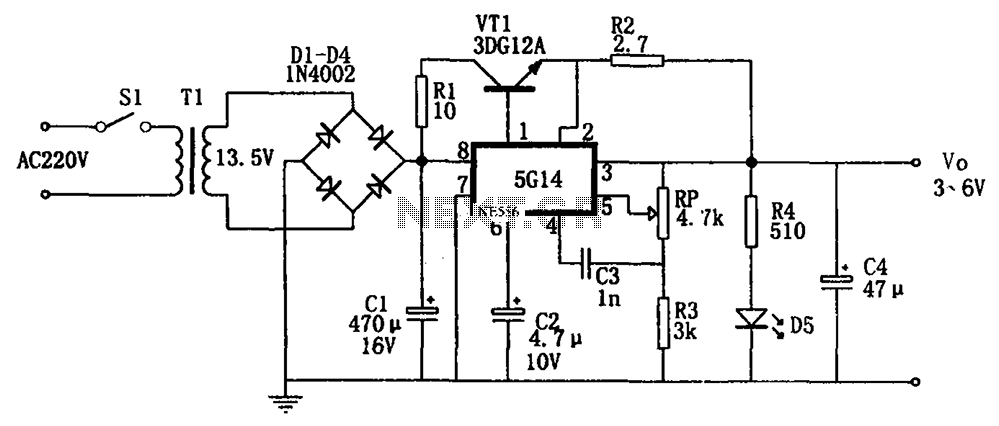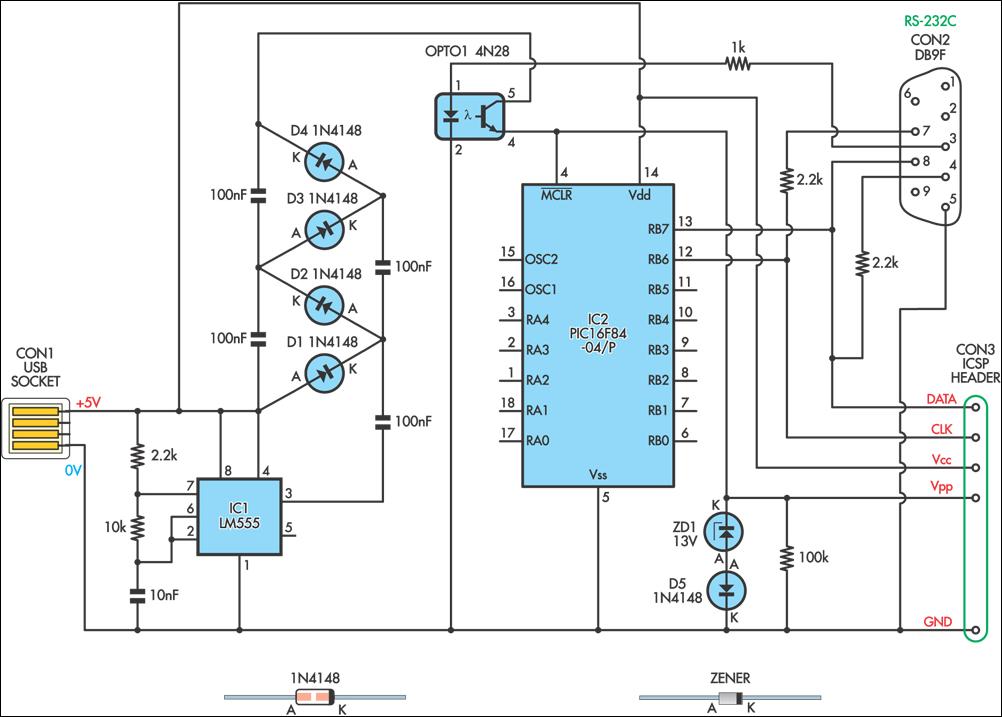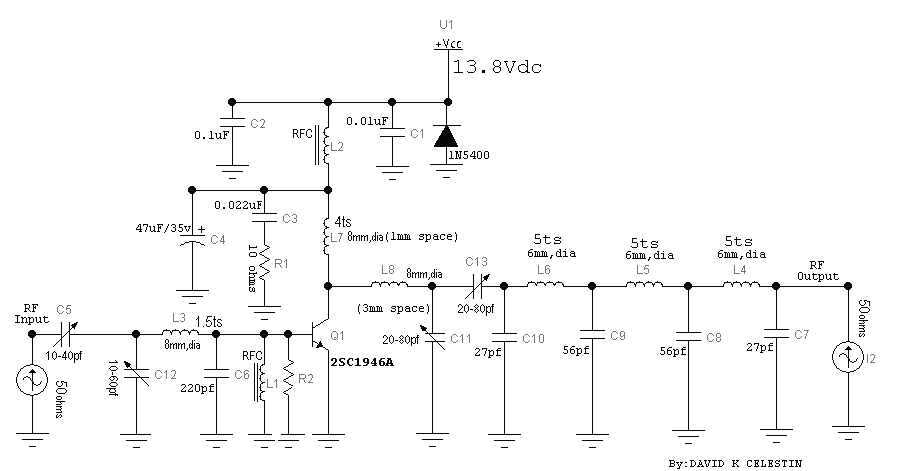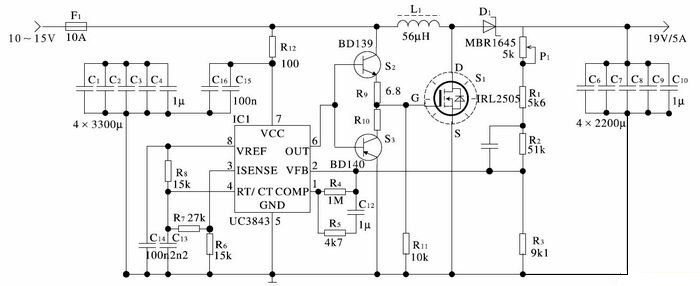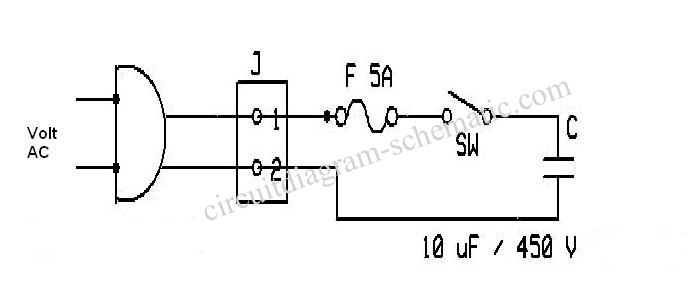
Solid State Tesla Coil and Wireless Power
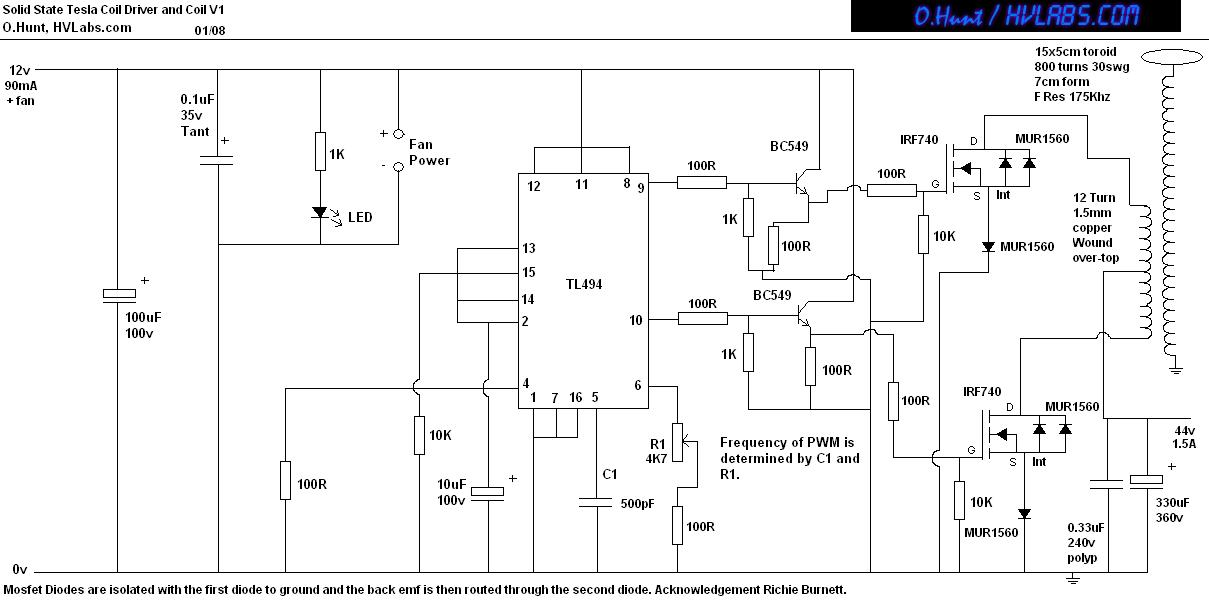
This is a solid-state version of a Tesla coil, replacing the spark gap with MOSFET transistors and utilizing a close-coupled primary coil without capacitors. The method of driving the primary coil varies among designs. After researching various works online, a custom design was created. This initial version features a straightforward circuit with several protection devices. Future iterations aim to incorporate more advanced features, including a self-tuning system, as the output voltage affects the resonant frequency proportionally. The secondary coil, or resonator, is derived from the Tesla Coil v1 project, with a self-resonant frequency of 174 kHz, necessitating a driver frequency that matches this. The design uniquely employs only two MOSFETs to drive the coil, utilizing two primary coils: one wound clockwise around the base of the secondary and the other counterclockwise over the first primary coil. Both coils are of equal length and gauge, with their top ends connected to the positive 44V rail. The two MOSFETs function as switches to ground for the primary coils, creating an AC system; the Tesla coil's secondary will exhibit a sinusoidal waveform due to the LC circuit. The integrated circuit used for the solid-state Tesla coil (SSTC) is the TL494 switch-mode power supply controller. The design closely resembles the Plasma Sonic Speaker driver, incorporating similar techniques. The circuit is largely self-explanatory, though clarification may be needed regarding the ground return from the secondary. A transformer from the mains produces the 44V to drive the primary, with the negative side (circuit ground) serving as the high-voltage ground. This approach differs from conventional Tesla coils, which typically require a solid earth ground. No issues have been encountered with this method, but caution is advised to avoid interference with household equipment. Large and small capacitors should be used across the circuit supply to mitigate noise, and RF chokes on the power lines may be beneficial at high power levels. Specifications for the Tesla resonator can be found on the Tesla Coil V1 page. The primary wire is solid copper 13A household cable, wound as follows: clockwise for 12 turns, then a center tap, and counterclockwise for another 12 turns. The MOSFETs used are IRF740s (or FQA55N10), though it has been noted that superior alternatives exist, such as the STW20NK50Z, which will be utilized in future revisions. Additionally, Nikola Tesla demonstrated wireless power transmission, achieving distances over 25 miles. This concept involves two identical secondary coils, one as the transmitter and the other as the receiver, forming a "tuned system" where signals from the transmitter are sent to the receiver. This system is efficient, and while a distance of just over 1 meter has been achieved, limitations exist due to the current MOSFETs. The receiving coil's ground connects to the 44V negative rail, which could also be connected to earth if the earth is used for the transmitting coil, potentially increasing the transmission distance. The receiving coil features a 12-turn primary coil at its base, with its output connected to a 240V 25W incandescent bulb. When the transmitting coil is powered, the bulb glows to approximately half brightness, an impressive feat considering only 60W of power is supplied. It has also been observed that the receiving coil emits RF power, causing fluorescent lights nearby to illuminate.
The solid-state Tesla coil (SSTC) is an innovative adaptation of Nikola Tesla's original design, incorporating modern components such as MOSFET transistors for more reliable and efficient operation. By eliminating the traditional spark gap, the circuit not only enhances safety but also allows for more precise control of the oscillation frequency. The two primary coils, configured in a counter-wound manner, create a more effective magnetic coupling with the secondary coil, leading to improved energy transfer and resonance.
The TL494 integrated circuit serves as the heart of the control mechanism, regulating the switching of the MOSFETs to maintain the desired frequency and output voltage. This adaptability is crucial for achieving resonance with the secondary coil, which is essential for maximizing the energy output of the system. The design's emphasis on using a circuit ground for high-voltage applications is a noteworthy deviation from traditional methods, suggesting that with careful design considerations, effective performance can be achieved without the need for a dedicated earth ground.
In terms of construction, the choice of solid copper wire for the primary coils ensures minimal resistive losses, while the winding technique maximizes the inductance and coupling efficiency. The use of high-quality MOSFETs, such as the STW20NK50Z in future iterations, will further enhance performance, allowing for higher switching speeds and greater power handling capabilities.
The wireless power transmission aspect of this project demonstrates the practical applications of resonant coupling, showcasing the potential for efficient energy transfer over short distances. The ability to light an incandescent bulb with minimal input power illustrates the effectiveness of the tuned system, while the emission of RF power from the receiving coil indicates the system's capability to operate in a wireless energy transmission mode.
Overall, this solid-state Tesla coil project not only pays homage to Tesla's pioneering work but also pushes the boundaries of modern electronics, offering insights into the possibilities of wireless power transfer and resonant energy systems. Continued experimentation and refinement of the design will likely yield even more impressive results, contributing to the ongoing exploration of high-frequency electrical phenomena.This is a Solid State version of a Tesla coil. Eg, replacing the spark gap with Mosfet transistors and using a close coupled primary coil without capacitors. The method of driving the primary coil varies from design to design. After looking around the internet at various other peoples work, I set out to design my own. For version 1 this is just a fairly straight forward circuit, with a few protection devices. The next version will be more advanced, hopefully one which will include a self tuning system (as the output voltage drawn effects the resonant frequency proportionally). The Secondary coil or resonator comes fromthe Tesla Coil v1 project. The Self resonant frequency of this coil with topload is 174Khz. So the driver will need to produce a frequency that matches this. This is where my setup differentiates from others in that I use only 2 mosfets to drive the coil. To do this I use two primary coils. One wound clockwise up the base of the secondary and one wound counterclockwise down over the top of the first primary coil.
Both a of equal length wire and of the same guage. The center or top end of the two primarys are joined together and are connected to the poisitive 44v rail. The 2 mosfets serve as switches to ground for the two primarys, creating and AC system (The TC secondary will actually see a sinusoidal waveform due to the LC circuit).
The IC I have used for the SSTC is the well known TL494 Switch mode power supply controller. The design is very similar to my Plasma Sonic Speaker driver and incorporates some of the techniques used in that project. The circuit is pretty self explanatory. The only thing that may need clarification is the ground return from the secondary. As I am using a transformer from the mains to produce the 44V to drive the primary, I am simply using the negative side (circuit ground) of this as my HV ground.
This is contrary to normal TC`s as they state you must use a solid earth ground. I have not experienced any problems with doing it my way, but please bear this in mind if you find equipment in your house being dissrupted. Just make sure you use large and small capacitors across the circuit supply to catch any noise (even rf chokes on the power lines maybe a good idea for high power levels).
The specs for the Tesla Resonator can be seen on the Tesla Coil V1 page. The primary wire used is solid copper 13A household cable and is wound like this; Direction: CW For:12T, then: + center tap, Direction: CCW back over the top of CW For: 12T. Mosfets used in this circuit are IRF740`s (or FQA55N10), these are ok but this experimentor has found that there are far better mosfets to use than these.
The next revision will use these, STW20NK50Z. Another technology that was demonstrated by Nikola Tesla, is the Wireless transmission of power. He demonstrated this from his laboratory in Colorado Springs and achieved a transmission distance of over 25 miles. The concept is simple. You take two identical secondary coils, use 1 as the transmitter and one as the receiver. These form a "tuned system", whereby signals presented to the transmitter and sent to the receiver. The system is incredibly good and very effecient. I have personally achieved a distance of just over 1 meter, not amazing, but I am limitted at the moment by the mosfets I am using.
The RX secondary ground is connected to the 44V negative rail (this could also be the earth if you use the earth for the TX coil, in this way, the distance between them can be increased). The receiving coil has a 12 Turn primary coil around the base. The output from the primary is connected to a 240V 25W incandescent bulb. When the transmitting coil is powered up, the bulb glows to about half brightness! This is quite amazing since I am only feeding in about 60W of power. It has also been noticed that the receiving coil emits rf power as well. Fluro lights can be seen to glow around the receiving coil`s sec 🔗 External reference
The solid-state Tesla coil (SSTC) is an innovative adaptation of Nikola Tesla's original design, incorporating modern components such as MOSFET transistors for more reliable and efficient operation. By eliminating the traditional spark gap, the circuit not only enhances safety but also allows for more precise control of the oscillation frequency. The two primary coils, configured in a counter-wound manner, create a more effective magnetic coupling with the secondary coil, leading to improved energy transfer and resonance.
The TL494 integrated circuit serves as the heart of the control mechanism, regulating the switching of the MOSFETs to maintain the desired frequency and output voltage. This adaptability is crucial for achieving resonance with the secondary coil, which is essential for maximizing the energy output of the system. The design's emphasis on using a circuit ground for high-voltage applications is a noteworthy deviation from traditional methods, suggesting that with careful design considerations, effective performance can be achieved without the need for a dedicated earth ground.
In terms of construction, the choice of solid copper wire for the primary coils ensures minimal resistive losses, while the winding technique maximizes the inductance and coupling efficiency. The use of high-quality MOSFETs, such as the STW20NK50Z in future iterations, will further enhance performance, allowing for higher switching speeds and greater power handling capabilities.
The wireless power transmission aspect of this project demonstrates the practical applications of resonant coupling, showcasing the potential for efficient energy transfer over short distances. The ability to light an incandescent bulb with minimal input power illustrates the effectiveness of the tuned system, while the emission of RF power from the receiving coil indicates the system's capability to operate in a wireless energy transmission mode.
Overall, this solid-state Tesla coil project not only pays homage to Tesla's pioneering work but also pushes the boundaries of modern electronics, offering insights into the possibilities of wireless power transfer and resonant energy systems. Continued experimentation and refinement of the design will likely yield even more impressive results, contributing to the ongoing exploration of high-frequency electrical phenomena.This is a Solid State version of a Tesla coil. Eg, replacing the spark gap with Mosfet transistors and using a close coupled primary coil without capacitors. The method of driving the primary coil varies from design to design. After looking around the internet at various other peoples work, I set out to design my own. For version 1 this is just a fairly straight forward circuit, with a few protection devices. The next version will be more advanced, hopefully one which will include a self tuning system (as the output voltage drawn effects the resonant frequency proportionally). The Secondary coil or resonator comes fromthe Tesla Coil v1 project. The Self resonant frequency of this coil with topload is 174Khz. So the driver will need to produce a frequency that matches this. This is where my setup differentiates from others in that I use only 2 mosfets to drive the coil. To do this I use two primary coils. One wound clockwise up the base of the secondary and one wound counterclockwise down over the top of the first primary coil.
Both a of equal length wire and of the same guage. The center or top end of the two primarys are joined together and are connected to the poisitive 44v rail. The 2 mosfets serve as switches to ground for the two primarys, creating and AC system (The TC secondary will actually see a sinusoidal waveform due to the LC circuit).
The IC I have used for the SSTC is the well known TL494 Switch mode power supply controller. The design is very similar to my Plasma Sonic Speaker driver and incorporates some of the techniques used in that project. The circuit is pretty self explanatory. The only thing that may need clarification is the ground return from the secondary. As I am using a transformer from the mains to produce the 44V to drive the primary, I am simply using the negative side (circuit ground) of this as my HV ground.
This is contrary to normal TC`s as they state you must use a solid earth ground. I have not experienced any problems with doing it my way, but please bear this in mind if you find equipment in your house being dissrupted. Just make sure you use large and small capacitors across the circuit supply to catch any noise (even rf chokes on the power lines maybe a good idea for high power levels).
The specs for the Tesla Resonator can be seen on the Tesla Coil V1 page. The primary wire used is solid copper 13A household cable and is wound like this; Direction: CW For:12T, then: + center tap, Direction: CCW back over the top of CW For: 12T. Mosfets used in this circuit are IRF740`s (or FQA55N10), these are ok but this experimentor has found that there are far better mosfets to use than these.
The next revision will use these, STW20NK50Z. Another technology that was demonstrated by Nikola Tesla, is the Wireless transmission of power. He demonstrated this from his laboratory in Colorado Springs and achieved a transmission distance of over 25 miles. The concept is simple. You take two identical secondary coils, use 1 as the transmitter and one as the receiver. These form a "tuned system", whereby signals presented to the transmitter and sent to the receiver. The system is incredibly good and very effecient. I have personally achieved a distance of just over 1 meter, not amazing, but I am limitted at the moment by the mosfets I am using.
The RX secondary ground is connected to the 44V negative rail (this could also be the earth if you use the earth for the TX coil, in this way, the distance between them can be increased). The receiving coil has a 12 Turn primary coil around the base. The output from the primary is connected to a 240V 25W incandescent bulb. When the transmitting coil is powered up, the bulb glows to about half brightness! This is quite amazing since I am only feeding in about 60W of power. It has also been noticed that the receiving coil emits rf power as well. Fluro lights can be seen to glow around the receiving coil`s sec 🔗 External reference
